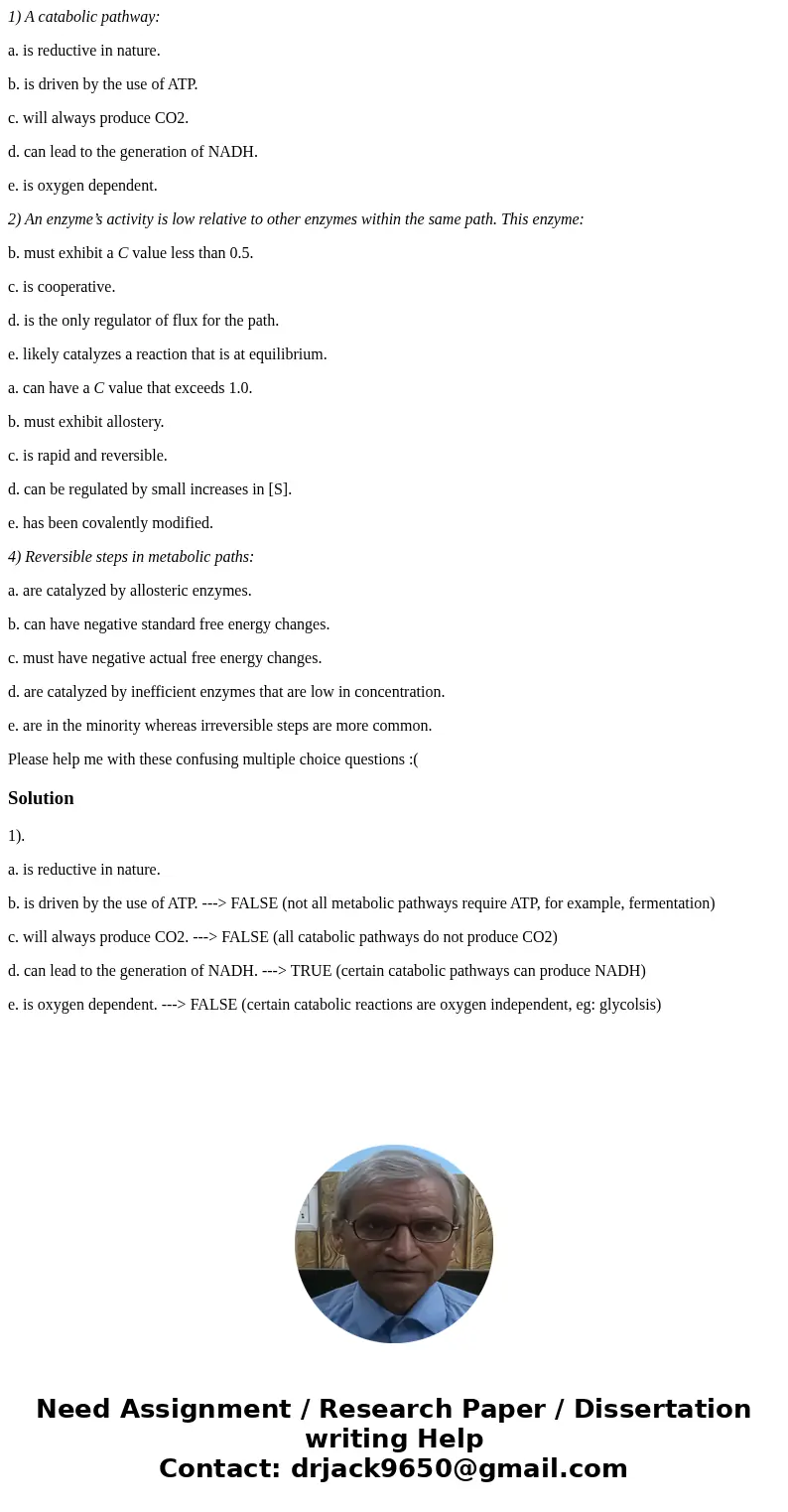1 A catabolic pathway a is reductive in nature b is driven b
1) A catabolic pathway:
a. is reductive in nature.
b. is driven by the use of ATP.
c. will always produce CO2.
d. can lead to the generation of NADH.
e. is oxygen dependent.
2) An enzyme’s activity is low relative to other enzymes within the same path. This enzyme:
b. must exhibit a C value less than 0.5.
c. is cooperative.
d. is the only regulator of flux for the path.
e. likely catalyzes a reaction that is at equilibrium.
a. can have a C value that exceeds 1.0.
b. must exhibit allostery.
c. is rapid and reversible.
d. can be regulated by small increases in [S].
e. has been covalently modified.
4) Reversible steps in metabolic paths:
a. are catalyzed by allosteric enzymes.
b. can have negative standard free energy changes.
c. must have negative actual free energy changes.
d. are catalyzed by inefficient enzymes that are low in concentration.
e. are in the minority whereas irreversible steps are more common.
Please help me with these confusing multiple choice questions :(
Solution
1).
a. is reductive in nature.
b. is driven by the use of ATP. ---> FALSE (not all metabolic pathways require ATP, for example, fermentation)
c. will always produce CO2. ---> FALSE (all catabolic pathways do not produce CO2)
d. can lead to the generation of NADH. ---> TRUE (certain catabolic pathways can produce NADH)
e. is oxygen dependent. ---> FALSE (certain catabolic reactions are oxygen independent, eg: glycolsis)

 Homework Sourse
Homework Sourse